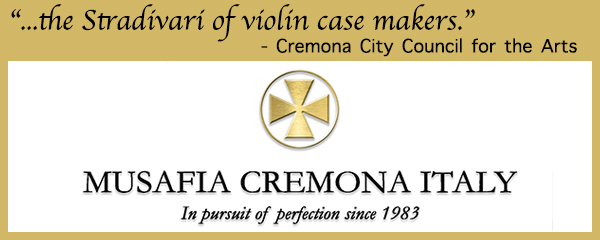Core Violin techniques to keep
As a hobbyist violinist, it is hard to have time and keep up with violin techniques. Daily practice for hours is not a possibility.Given the limited time, say 1 hour/day, which main techniques one should focus on? Furthermore, what would be the best method book/lessons to practice with such a restricted time?
For a context, we are in between cycles in a community orchestra and the repertoire is mostly Classical and Romantic symphonies.
Tweet
Replies (36)
The idea is simple - 3 minutes per day minimum (that's right - 3 minutes).
You can play anything or any amount of time after that, but that 3 minutes is your daily chore. And it has to be with full concentration on a technically important detail. Play it super slowly with FULL concentration.
You can do something different each day, but that 3 minutes is your daily chore.
Even if you don't play too much after that each day, just watch what happens after even one week of giving at least 3 minutes of full concentration to something.
I hope that helps.
Sandy
if I could choose one book that both sustains and improves the fundamental aspects of technique it would be Simon Fischer’s ‘Warming up.’ You can pick and choose from a highly manageable menu of time proven exercises according to how you feel on a given day. In particular the tapping, vibrato and straight bow exercises are invaluable.
Cheers,
Buri
Another possibility is Drew Lecher’s book on technique which was designed for people with no time to wade through etude books. However, unless you really know what you are doing it can be a little hard to get a handle on.
Sander - interesting indeed. Thanks for sharing. I will look up for this article in case it is available in the internet.
Tom - after the passing of my teacher over 1 year ago, I feel really hard to find a replacement that would make sense. He was a real gem and only few can match passion to teach combined with professional experience.
https://bccmusic.ca/robert-rozek-bio
Erik - scales are important but personally I have been more inclined to certain arpeggios in double stops developed by Mr. Milstein that has helped with intonation, left-hand strength and muscle memory.
Buri - Greetings! Simon Fischer’s ‘Warming up.’ also sounds very interesting so will check it out.
Thank you all so far for very good suggestions.
I forgot another masterpiece which is rarely used these days. Sammons: the secrets of violin technique. Sammons was a brilliant player with an incredibly deep understanding of the instrument. I am puzzled this book isn’t still part of basic repertoire. It may be available on IMSLP. Its rather like warming up but three times bigger and covers everything you would find in the Lreutzer but faster…
Cheers,
Buri
And another vote for Sammons (BTW look him up on U-toob..)
For my busy high-school (lycée) students I made five pages of "basics" called the First Two Minutes (in French, the Two First Minutes, which doesn't quite make sense..)
Each page, (intonation, vibrato, shifting, speed etc.) takes two minutes, but with an possibility to pic'n'mix.
The idea is to revive, or confirm, basic sounds and gestures with undivided attention for up to 10 minutes, before putting the violin away again, or before continuing with "dynamic" practice.
The maintenance hour: warm-ups and exercises, scales and arpeggios in one key per day, (I am not a fan of the Flesch book, too advanced and strenuous for me at this age, and I don't use those fingerings in real music), one new etude per week or one review etude per day, (I like Rode). For bowing: Sevcik Op. 3 variations.Then your orchestra excerpts. Also work on your orchestra parts for future concerts and seasons. If you are a section 2nd violin, challenge yourself with the 1st violin parts. Those are used for the audition at your next orchestra. All that will be about an hour.
For any amateur, especially those who haven't had lessons for a while, and could be experiencing problems, I would recommend a series of lessons in posture etc from a good observant teacher who has the answers. I was fortunate enough to find such a teacher in my early days as a late adult beginner.
The answer obviously depends on your goals. For classical and romantic orchestral music in community orchestras I'd say you get along with about the following:
Left hand:
Decent intonation, vibrato, facility in positions 1 - 5 plus ability to learn some passages higher up (this last one primarily for 1st violin). Double stopping is not crucial; you can always play divisi.
Bow / right arm
dynamic from piano to forte, legato, détaché, spiccato, pizzicato.
He asked about core techniques and method books. He was provided with method books and, at the very least , by implication of containment what to focus on.
Your ideas are excellent but not as efficient as the practice methods I use for me personally, establishing the obvious point that ‘core7 exercises also depend on the individual.
I feel there is enough material to apply to my maintenance hour (borrowing the term from Joel).
You can use a drone and blend well, but it's better to keep your ears awake to the harmonies of your violin.
So I find myself wondering whether I'd adopt different (more Flesch-like) fingerings for those kinds of orchestral or chamber passages if only I were *better* at playing scales Flesch's way, and whether that's what pro orchestral and chamber violinists do.
Scales are like rainbows: not art, but still beautiful!
Scales, and scale-based patterns, allow Undivided Attention towards intonation and tone. One could do worse!
And we mustn't forget arpeggios, with their double-stop-type twists and stretches of finger and wrist.
With wide finger-tips and a short 4th finger, I have worked out my own way of doing the 3-octave scales. I start and stay in 1st or 1/2 position then go up the E-string in a variety of patterns. My current favorite pattern for one octave high on the E-string will look a little odd: 1-2-3-2-3-2-3-3. For real music, the optimum fingerings depend a lot on the context, rhythm, and even the bowing. Lately, after attempting to do some of Ricci's book,(very advanced), I have been playing 1/2 steps with the same finger a lot more often.
Besides that, I recommend to make sure that you start out with warm muscles. This can save you some time period of frustration as opposed to warming up with your instrument.
Some physical exercising/stretching, even a cup of hot tea- anything that you can squeeze in to get really warm from the inside.
Makes a HUGE difference for me, especially during the winter.
Besides that, I recommend to make sure that you start out with warm muscles. This can save you some time period of frustration as opposed to warming up with your instrument.
Some physical exercising/stretching, even a cup of hot tea- anything that you can squeeze in to get really warm from the inside.
Makes a HUGE difference for me, especially during the winter.
One exercise I myself use is to start with a scale, then improvise from it, after going up and down at least once. You know, three notes up, drop down a second, jump to a fourth above, then run down to the second, climb in seconds til you reach the ninth, the fall back in thirds till you reach the seventh just below the tonic, jump to the second above, then finish on the tonic. Or whatever I feel like playing, that sort of thing. It tests my ears and fingers.
This discussion has been archived and is no longer accepting responses.
Violinist.com is made possible by...
Dimitri Musafia, Master Maker of Violin and Viola Cases
International Violin Competition of Indianapolis
Violinist.com Holiday Gift Guide
Johnson String Instrument/Carriage House Violins
Subscribe
Laurie's Books
Discover the best of Violinist.com in these collections of editor Laurie Niles' exclusive interviews.

Violinist.com Interviews Volume 1, with introduction by Hilary Hahn

Violinist.com Interviews Volume 2, with introduction by Rachel Barton Pine
















